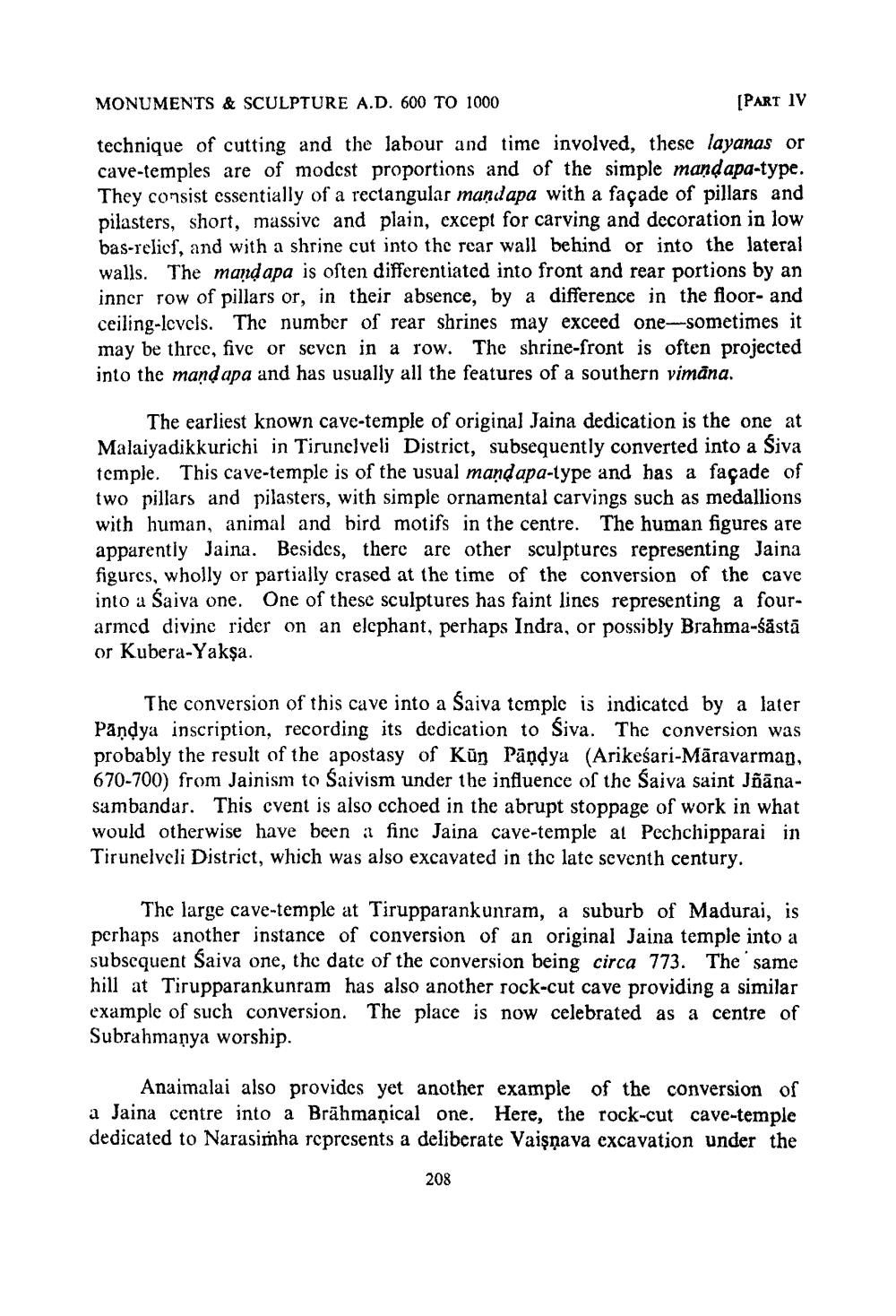________________
MONUMENTS & SCULPTURE A.D. 600 TO 1000
[PART IV
technique of cutting and the labour and time involved, these layanas or cave-temples are of modest proportions and of the simple mandapa-type. They consist essentially of a rectangular mandapa with a façade of pillars and pilasters, short, massive and plain, except for carving and decoration in low bas-relief, and with a shrine cut into the rear wall behind or into the lateral walls. The mandapa is often differentiated into front and rear portions by an inner row of pillars or, in their absence, by a difference in the floor- and ceiling-levels. The number of rear shrines may exceed one-sometimes it may be three, five or seven in a row. The shrine-front is often projected into the mandapa and has usually all the features of a southern vimāna.
The earliest known cave-temple of original Jaina dedication is the one at Malaiyadikkurichi in Tirunelveli District, subsequently converted into a Śiva temple. This cave-temple is of the usual mandapa-type and has a façade of two pillars and pilasters, with simple ornamental carvings such as medallions with human, animal and bird motifs in the centre. The human figures are apparently Jaina. Besides, there are other sculptures representing Jaina figures, wholly or partially crased at the time of the conversion of the cave into a Śaiva one. One of these sculptures has faint lines representing a fourarmed divine rider on an elephant, perhaps Indra, or possibly Brahma-śāstā or Kubera-Yakşa.
The conversion of this cave into a Saiva temple is indicated by a later Pandya inscription, recording its dedication to Śiva. The conversion was probably the result of the apostasy of Kun Pandya (Arikeśari-Māravarman, 670-700) from Jainism to Śaivism under the influence of the Saiva saint Jñānasambandar. This event is also cchoed in the abrupt stoppage of work in what would otherwise have been a fine Jaina cave-temple at Pechchipparai in Tirunelveli District, which was also excavated in the late seventh century.
The large cave-temple at Tirupparankunram, a suburb of Madurai, is perhaps another instance of conversion of an original Jaina temple into a subsequent Śaiva one, the date of the conversion being circa 773. The same hill at Tirupparankunram has also another rock-cut cave providing a similar example of such conversion. The place is now celebrated as a centre of Subrahmanya worship.
Anaimalai also provides yet another example of the conversion of a Jaina centre into a Brāhmaṇical one. Here, the rock-cut cave-temple dedicated to Narasimha represents a deliberate Vaisnava excavation under the
208




